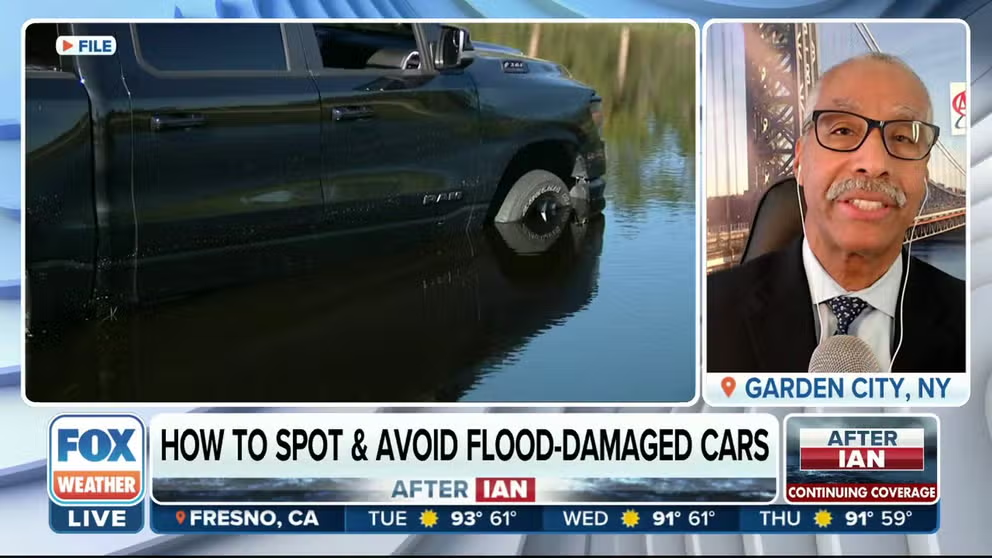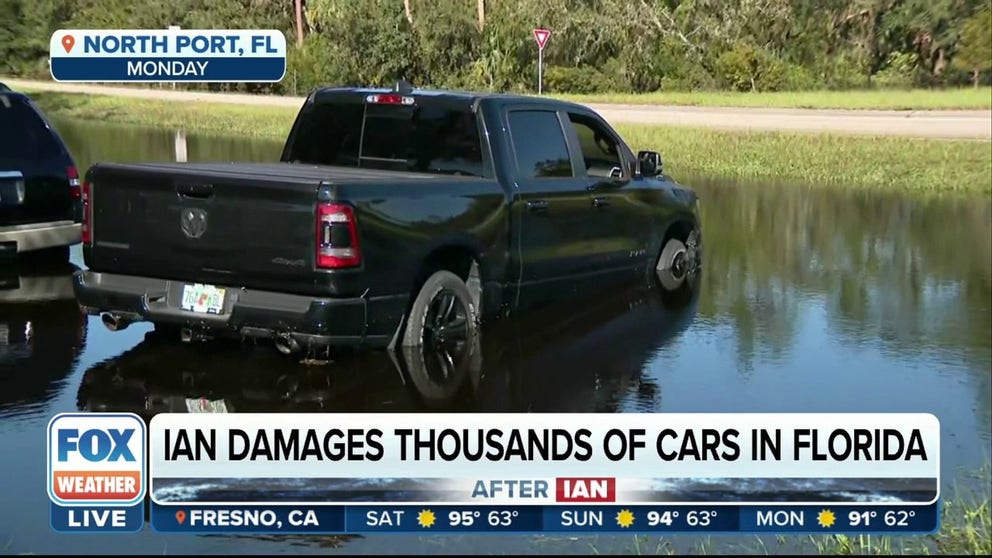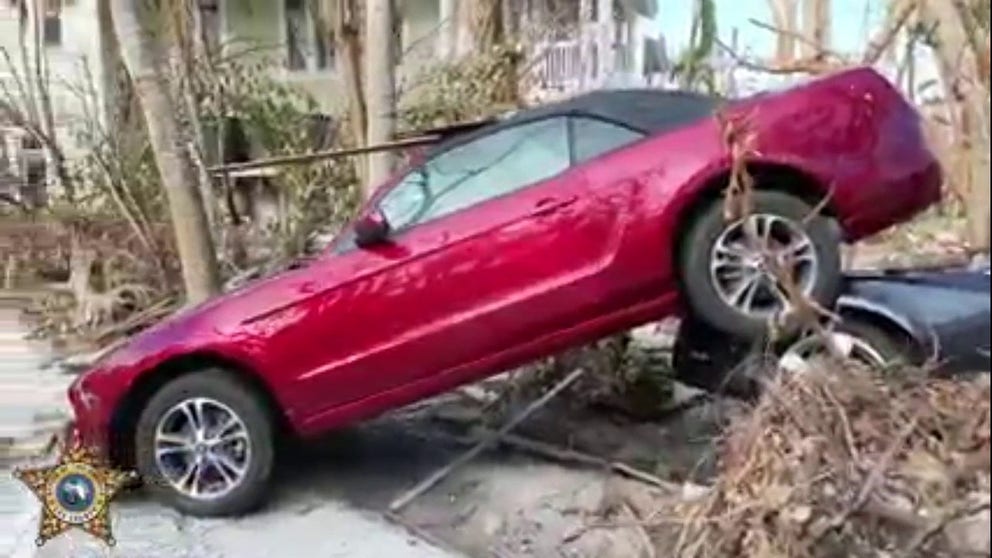Damaged cars from Hurricane Ian enter market. Here's how to spot a flooded vehicle
CARFAX estimates that 50% of flood-damaged cars return to the used car marketplace.
AAA warns of flood-damaged cars entering the market post-Hurricane Ian
With new and used vehicles commanding record high prices due to insufficient supply, flood cars from Hurricane Ian may be making their way into the used car market.
Insurance companies are still tallying the number of vehicles destroyed by Hurricane Ian. But already, those cars are showing up in the marketplace. Buyer beware, scammers take elaborate measures to keep you unaware you may be buying a car that was underwater.
"These vehicles are supposed to be written off by insurance companies and sold for scrap or sold for parts," AAA spokesperson Robert Sinclair told FOX Weather. "But there are individuals out there that are trying to get them running again."
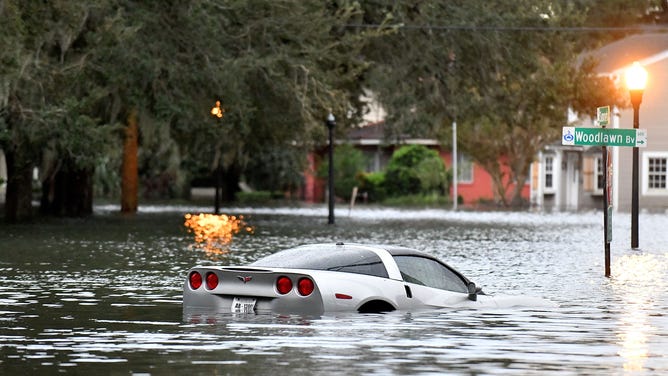
A car floating in Hurricane Ian's floodwaters in Orlando.
(Gerardo Mora / Getty Images)
Some areas of Florida saw 15 feet of storm surge. That was enough to cover the second floor of homes and garages. Some inland areas of the Sunshine State watched 2 feet of rain fall, enough to collect in low-lying ares and swamp cars.
HURRICANE IAN BY THE NUMBERS: THE SCOPE OF THE CATASTROPHIC DAMAGE
"If they've been flooded, particularly by storm surge, by saltwater, that can just cause a tremendous number of problems, can shut out electrical components and damage the vehicle very heavily. But, you might be able to get it running again," explained Sinclair. "But it's not going to run for very long."
The tell-tale signs of a flood-damaged car
Over a week ago, Hurricane Ian brought torrential rain and historic storm surge to Southwest Florida. Water filled the streets and flooded thousands of cars, leaving them damaged or unrepairable. Car owners must figure out how to handle their vehicles and consumers must be aware of flood damage entering the car market.
CARFAX estimates that Hurricane Ian damaged up to 358,000 vehicles in the storm’s trek across the Southeast.
Flood damaged cars showing up in other states
"We are seeing these flooded cars show up all around the country, putting unsuspecting buyers at risk," said Emilie Voss, CARFAX spokesperson in a press release. "Cosmetically these cars might look great, but if you don’t know what to look for, it’s nearly impossible to tell they are literally rotting from the inside out."
EVEN NAPLES FIREFIGHTERS NEEDED RESCUING FROM HURRICANE IAN'S FLOODING
Drones discover more of Ian's wrath daily
The Lee County Sheriff's Office is forced to use drones to survey damage from Hurricane Ian. Cars floated on top of cars and homes are skeletons.
The state where you are buying an Ian-flooded car may be nowhere near the path of the hurricane. But, unscrupulous people will try to unload the cars to the unsuspecting.
States with the most flooded cars, according to CARFAX:
- Texas: 67,000 vehicles
- Florida: 33,500 vehicles
- Kentucky: 26,000 vehicles
- Pennsylvania: 21,500
- New Jersey: 18,900
New and used cars were already in short supply and demand a premium after supply-chain kinks caused by the COVID-19 pandemic. Now, over a quarter million Floridians and Carolinians that lost their cars to the flooding and storm surge will be scrambling and desperate for a vehicle to get to work and complete hurricane repairs.
‘THEY WERE DENYING US RIGHT AWAY’: FLORIDA RESIDENTS FACE UNCERTAIN FUTURE IN IAN'S AFTERMATH
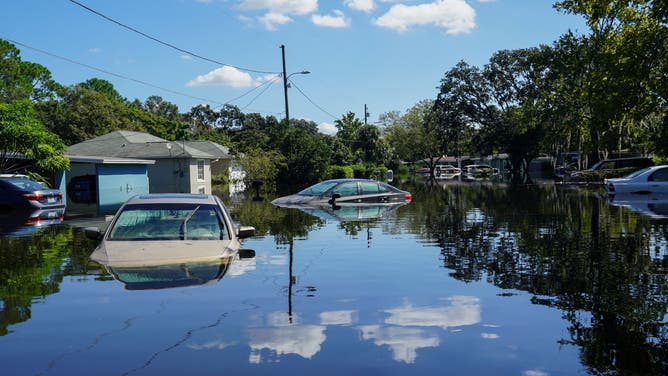
Flooding submerged several cars in an Orlando neighborhood.
(BRYAN R. SMITH/AFP / Getty Images)
How can damaged cars show a clean title?
Fraudsters will "wash" the title of flooded vehicles totaled by insurance companies.
"That means they take the VIN number from a similar vehicle that's been junked and attach it to that flooded vehicle," said Sinclair. "And then they can make repairs."
The flooded car will take on a different VIN or vehicle identification number and a completely different history that does not include a salvage title.
Companies like CARFAX collect information using the VIN to assemble a vehicle history. They get reports from state motor vehicle offices, insurance companies, repair and service facilities, law enforcement, fire departments, manufacturers and similar sources to compile a vehicle history. The history shows every state in which the vehicle was registered. Note that unreported accidents, incidents and repairs will not make the report.
Getting a vehicle’s history report is a smart idea but not infallible. Buyers should inspect the car themselves and get a second opinion if they are still unsure.
HERE'S WHAT TO DO AFTER YOUR CAR IS FLOODED

The storm surge subsided in Fort Myers, Florida but the damage has already been done to the car.
(Robert Ray / FOX Weather)
"The nose knows" Sinclair warns
Take a close look at and smell of a used car AAA and CARFAX recommend before buying:
- Sniff test: Smell for musty damp odors or for air fresheners used to cover up the smell. Close the doors and windows for several minutes before the sniff. Check if the seats are damp.
- Look for cover-ups: Look for new seats, interior or carpeting replacing flood damage. "If you've got new carpeting or new seats, especially if the vehicle might have 50 or 60,000 miles, and it's got a new interior, that's a warning sign," said Sinclair.
- Look underneath: Look under the carpet for mold, mud or rust. Don’t forget to check the trunk and spare tire too. Use a flashlight and look under the car and hood for mud left in the nooks and crannies. Sand in the spark plug cavity is another red flag warns CARFAX.
- Watch for rust: Springs underneath seats, exposed bolts and bubbling paint in the door jamb suggest flooding.
- Try every electrical component: Windows, lights and the electronic ignition are good places to start. Look for condensation behind the dashboard panel and in the headlights. Then look for small drill holes that may have drained floodwater. Listen to the stereo and sniff after running the air conditioner and heat.
- Look at the oil: Check the oil for water before a test drive and again after. Murky oil indicates water.
- Check the air filter: After the paper has been wet, it is obvious states CARFAX.
HOW TO WATCH FOX WEATHER ON TV

The storm surge carried this car out of a driveway and off a dock.
(GIORGIO VIERA/AFP / Getty Images)
Beside fatal electrical issues, flooding takes a toll on other parts of the car too which can affect your health and safety. Mold and waterborne bacteria in the seats or ventilation system can make people sick. Brakes can warp and rust. Airbags and seatbelts could be compromised. Flood damage can even cause the engine to overheat.
Over 400,000 water-damaged cars were already on the road nationwide before Ian made landfall, according to CARFAX.
